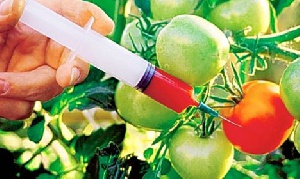Ghana is not shifting to cultivation of Genetically Modified (GM) cocoa, the Cocoa Research Institute of Ghana (CRIG) said on Friday.
According to CRIG, the decision was taken because the European Union is the largest buyer of Ghana’s cocoa and anti GM, so there is no way Ghana could plant the variety.
This notwithstanding, CRIG breeders are working on other resistant varieties to help tackle the pest infestation of cocoa, which is a major contribution to wealth creation and poverty alleviation.
Nearly a century after Tetteh Quarshie had introduced cocoa into the country, the cultivation of the crop became the major economic activity of the people of the forest areas, especially the Eastern Region.
Subsequent years witnessed its cultivation in other parts of the forest zone, comprising the Ashanti, Brong Ahafo and parts of the Volta and Central regions.
As a result, production of the crop increased significantly and eventually cocoa became the major foreign exchange earner for the country.
However, the industry was faced with one major challenge- the control of pests and diseases, which were having a negative effect on production.
Dr. Frank Amoah, Executive Director of CRIG, told Ghana News Agency in an interview that CRIG would work to ensure that Ghana hit the million tons in production to reclaim its position as the number one cocoa producing country.
Currently, Ghana is producing 850 tons as compared to the one million tons in 2010.
He said to improve cocoa yields, Amelonado, the original cocoa brought into the country, which has a gestation period between seven and eight years, has been replaced with the Amazon, which begins bearing fruit at about four years.
Although that boosted cocoa production, scientists at CRIG undertook further scientific research for a new breed that would bear fruit early and enhance yield.
Scientists at the CRIG, he said, are also working to mitigate the swollen-shoot and black pod disease through spraying, farm sanitation and spacing.
From 1936 to date, more than 200 million cocoa trees have been cut down and replaced.
The institute has also carried out a number of research activities that have boosted the production of other crops such as kola, coffee, sheanut and cashew.
The production of these crops, especially cocoa, has contributed significantly to poverty reduction in the communities and also generated huge foreign exchange earnings that have accelerated and continue to hasten national development.
CRIG, however, is not only researching into the cultivation or production of raw cocoa and the other crops but has in recent times carried out research to add value to the raw commodities.
The research has led to the use of the by-products of cocoa which include beverages and alcoholic drinks, soap (Alata samina, cocoa butter cake soap, liquid soap), pomade and cocoa biscuit.
Fertilizer has also been developed from potash obtained from the burnt dry cocoa husk, as well as animal feed from the fresh husk.
Production of these goods, however, has not been on commercial basis since it was not in line with the institute’s mandate.
Cocoa provides the most powerful dietary antioxidant, reduces blood pressure, delays physical signs of aging, minimises changes accompanying menopause, prevent stroke by improving blood circulation and fight stress.
Cocoa also boosts fertility in both sexes, affords anti-cancer prevention properties, promotes cleansing and detoxification of the body, improves memory and general brain function, and boost the sense of well-being.
Business News of Saturday, 19 April 2014
Source: GNA













